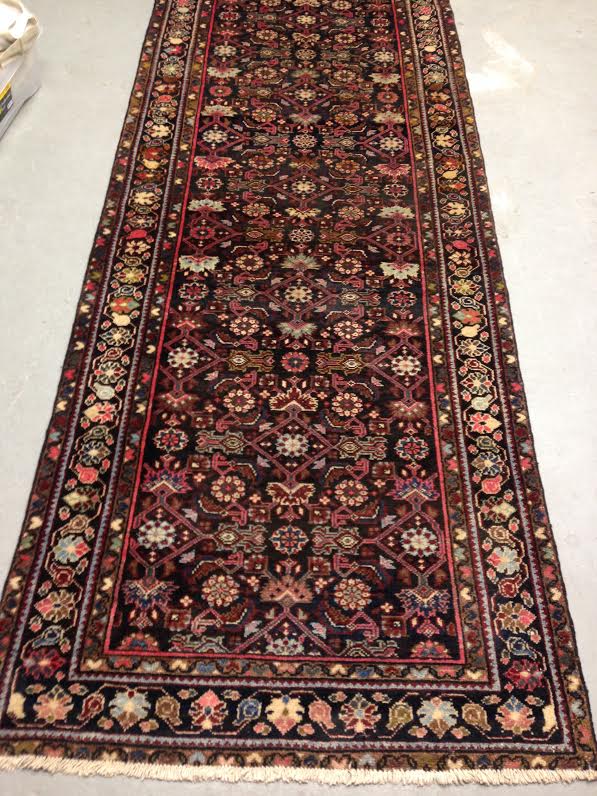When cleaning any handmade Persian, Oriental, Chinese, Turkish or even more modern rugs, some careful considerations must firstly be made. Mr Conway of Moray Speyside, Scotland soon learned that applying the same treatment to his chemically died carpets would not bode well on his vegetable dyed Hamadan rug. When Mr C got in touch with our Edinburgh office, he explained that he had used a cocktail of bleach, washing up liquid and hand soap to try to remove a stain in his piece with disastrous consequences.
The terracotta pattern in the Hamadan rug is created using vegetable dyes through the wool. The Madder plant is often used to produce reds, oranges and deeper shades of similar colours (depending on how much dye is used). Metallic salts are then utilized to help to bind the colour to the wool during production. This hugely decreases the chances that colours will run when they get wet, A phenomena known as colour fastness. In addition, the metallic salts help to deepen the dying into the wool so that sun bleaching will occur less quickly. Every die has a particular pH level depending on how much salt is added, this must be matched when cleaning. This is why we only use our own Persian and Afghan weavers, often brought up weaving rugs in their home regions such knowledge of rug cleaning only comes with a lifetime of experience.
Mr Conway had originally spilt what was believed to Orange juice on his rug, which is known to be highly acidic. As a result, bleach may have been the correct thing to apply to the rug surface, although unfortunately this had compensated a little too much and removed the colour completely from the wool pile.
Once we got the rug back to the Edinburgh Workshop, it was decided that the only way to bring the rug back to its original appearance was to re-weave the area. Carefully cutting out a perimeter around the bleached area, a new wooden loom was constructed to rebuild the foundation, giving us a strong and reliable base to work from. Cotton in the foundation is woven with three strands of cotton fibre together, to produce a string. Once this has been done, three strings are then twisted together to form the base thickness of cotton needed to form a strong foundation. Given the area was small (roughly credit card size), this was not an extremely big job. However, correctly matching colour to the rest of the rug is essential so the new area does not stand out to someone viewing the piece. Such colour matching involves the exact same process discussed above, where wool colours are visually matched to the old areas of the rug so that our repairers can re-dye new wool to weave.
Once the patch had been re-woven from the cotton foundation all the way up to the wool pile, the rug was almost ready to return to Mr C. Given the damage to the rug, Mr C did not want further damage to occur and opted to have hanging hoops installed on the rear of the piece. As requested, we got to work in weaving the hoops into the rug at proper intervals to ensure the rug would hang evenly and flat against the wall. In addition, the weavers made sure that the hoops were woven in such a fashion to prevent adverse strain on any areas of the pile or foundation, that could result in gaping holes from hanging further down the line.
Thanks again for your time Mr Conway, this is certainly not the first time the ORRC has been faced with washes that have gone wrong, and it will not be the last. No problem is too big or embarrassing for us at the Oriental Rug Repair Company, a solution can always be found!


